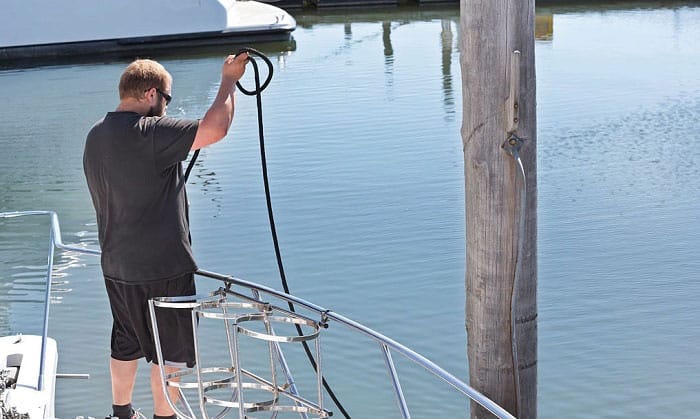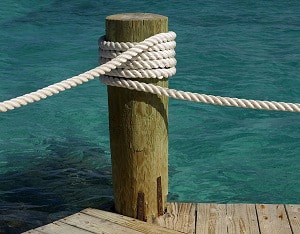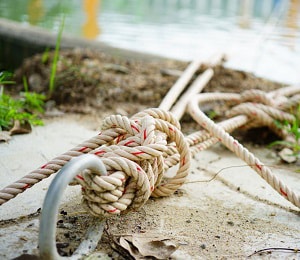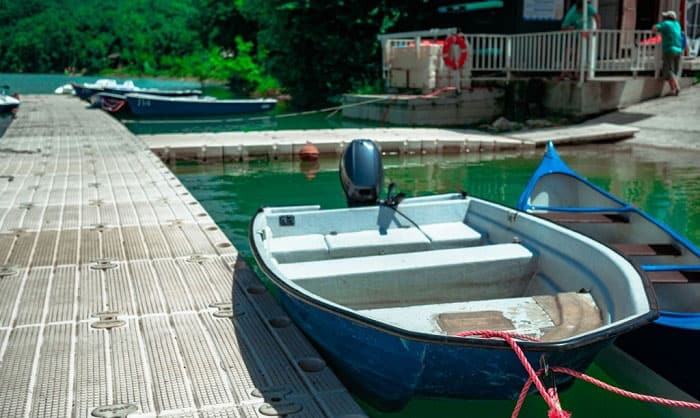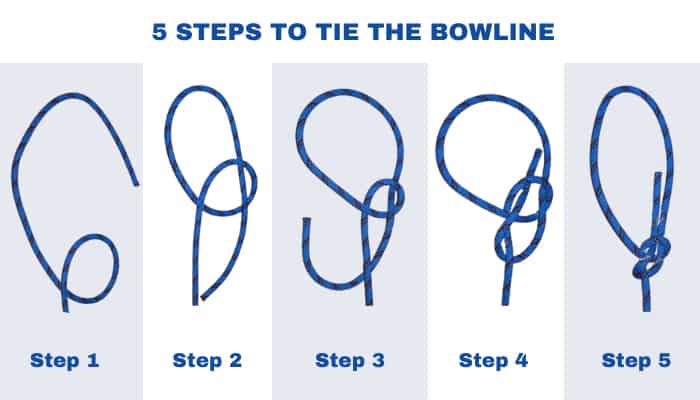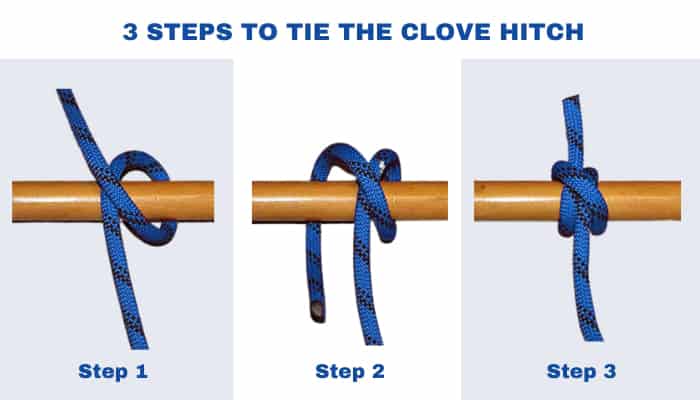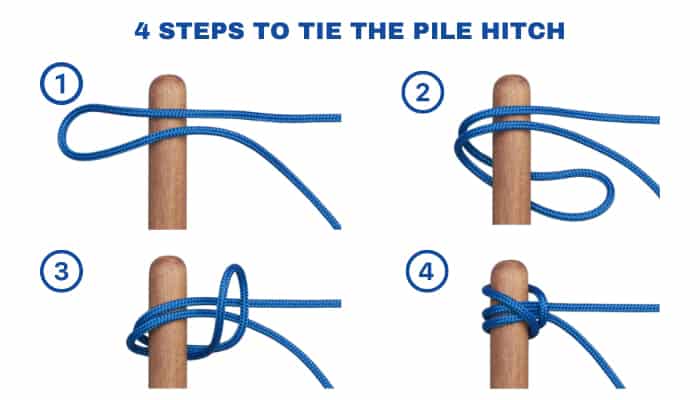Ways to tie a boat to dock pilings
- Using the bowline
- Tie with the clove hitch
- Via the pile hitch
Docking properly is a very important aspect of boating, and cleats are very important tools to ensure that the boat is properly secured. However, cleats are not always available. What should you do then?
In this short article, we’ll take a look at how to tie a boat to a dock without cleats. We will take a look at the best alternatives to the cleat as well as how to use them. We will also go over some important details for securing the boat to a dock.
Keep reading to learn more.
Table of Contents
A Dock Without Cleats
Cleats are extremely important in boating. If you have been on a boat, even if you don’t do it frequently, you’ve probably seen cleats. They’re almost everywhere and even used to tie a boat to a mooring buoy, but sometimes cleats are not available.
It is for these situations that it is important to know what options are available to us. For docks where there are no cleats, there would be pilings instead.
1. Pilings
Pilings are posts, usually wooden, found on the dock. There are usually several of them, and the bigger the dock, the more pilings there are. These pilings are actually the foundation of the dock structure itself, much like the scaffold of a building.
Because these pilings serve as the foundation of the dock, they are always there. To tie the boat to the dock using pilings, however, the pilings need to extend over the dock itself. The pilings can extend a few feet in varying lengths, and rarely do you find docks without extended pilings.
Using pilings is similar to how cleats are used to tie a boat to 4 pilings is still considered ideal because this provides ample support for the boat in case the wind or water becomes restless.
2. Dock Rings
Another option for tying the boat to the dock would be using rings. These rings are attached to the dock in a similar manner to cleats. The boat line can be tied to them directly the same way that cleats or pilings are used.
However, tying the line to dock rings is not always necessary. Some people only go through the rings and only tie lines to their boat’s cleats.
How to Tie the Boat Without Dock Cleats
When using cleats, we use the cleat hitch to tie the rope to tie a boat to a piling or a ring, there is an appropriate knot for use as well. The bowline is a multipurpose knot that can be used in a vast number of situations and can be used for pilings as well.
Another useful knot is the clove hitch, which can be used for both pilings and dock rings. We’ll take a closer look at both the bowline, the clove hitch, and the pile hitch below.
What You Need
It goes without saying that you’ll need a rope for this.
1. The Bowline
Considered one of the most important knots due to its versatility, the bowline is a simple knot that is easy to tie. It is a loop that holds securely when tightened or pulled on but remains easy to undo afterwards.
Another reason for its versatility is how it can be tied preemptively before the boat approaches the dock or with the piling and is excellent for tying a boat between pilings. It can also be used to tie the boat to dock rings.
The bowline is one of the most common knots used to tie a boat to a dock overnight. It can be adjusted for many different purposes and retains its secure and easy-to-use characteristics. It is also recommended to use for tying down light aircraft.
Steps – How to tie a bowline
- Step 1: Bring the rope around the piling.
- Step 2: Make a small loop with the long end by crossing that end over itself.
- Step 3: Take the short end and insert it into the small loop.
- Step 4: Bring the short end over the line and into the small loop once more.
- Step 5: Pull to tighten. This is the bowline.
2. The Clove Hitch
The clove hitch is another fundamental knot that is well-known due to its simplicity and ease of use. It can easily be tied to secure an object, and can easily be undone afterward. It can also be used to tie a boat to dock rings.
For boating, this is among the most common knots to use for tying the boat to pilings, along with the bowline knot. It is preferred when stopping to load or unload as it is easy to use and remove.
The biggest disadvantage of the clove hitch is that it may come undone when there is no pull on the line. Since the boat will be pulling on it, it should stay secure.
Steps – How to tie the clove hitch
- Step 1: Bring the line around the piling with the short end under the long end.
- Step 2: Wrap the short end over the long end and go around the piling one more time.
- Step 3: Tuck the short end between the two intersecting lines. Pull the line to tighten and secure it. This is the clove hitch.
3. The Pile Hitch
This is a knot specialized for use with posts and pilings. It is easy to tie and is secure owing to the fact that it was made specifically for use with posts. Perhaps the only disadvantage is needing to halve the length of your line, but the benefits are worth it.
Steps – How to tie the pile hitch
- Step 1: Fold the entire length of a rope into a double line.
- Step 2: Take the folded end and bring it around the piling.
- Step 3: Bring the fold under the line, then up over the piling.
- Step 4: Insert the piling between the fold. Pull the end of the line to tighten.
This is the pile hitch.
Conclusion
For boating activities, it helps to be ready for different kinds of situations. Knowing how to tie a boat to a dock without cleats will certainly help, though we won’t know when exactly it will come in handy. Still, it’s better to err on the side of caution, and knowing something extra won’t hurt.
If you know anyone else wondering how to use docks without cleats, please share this article with them. Also, please leave your comments below.
Remember to boat safely.

“My intention from the first day establishing Boating Basics Online is to provide as much help as possible for boaters who want to experience a first safe and convenient trip. So feel free to join us and share your beautiful journeys to the sea!”

